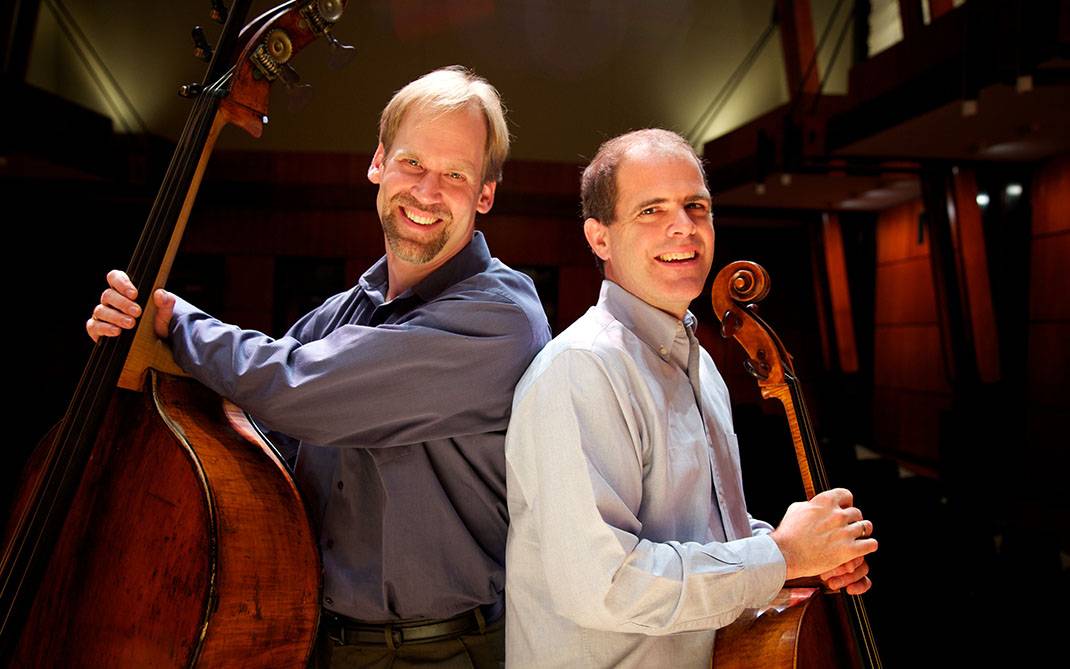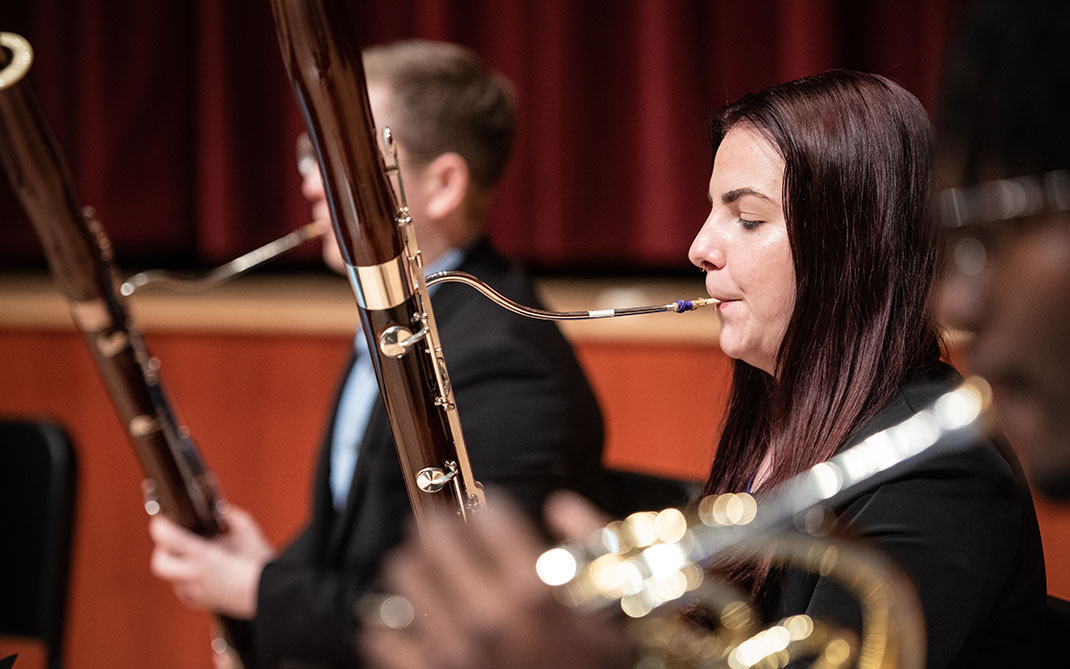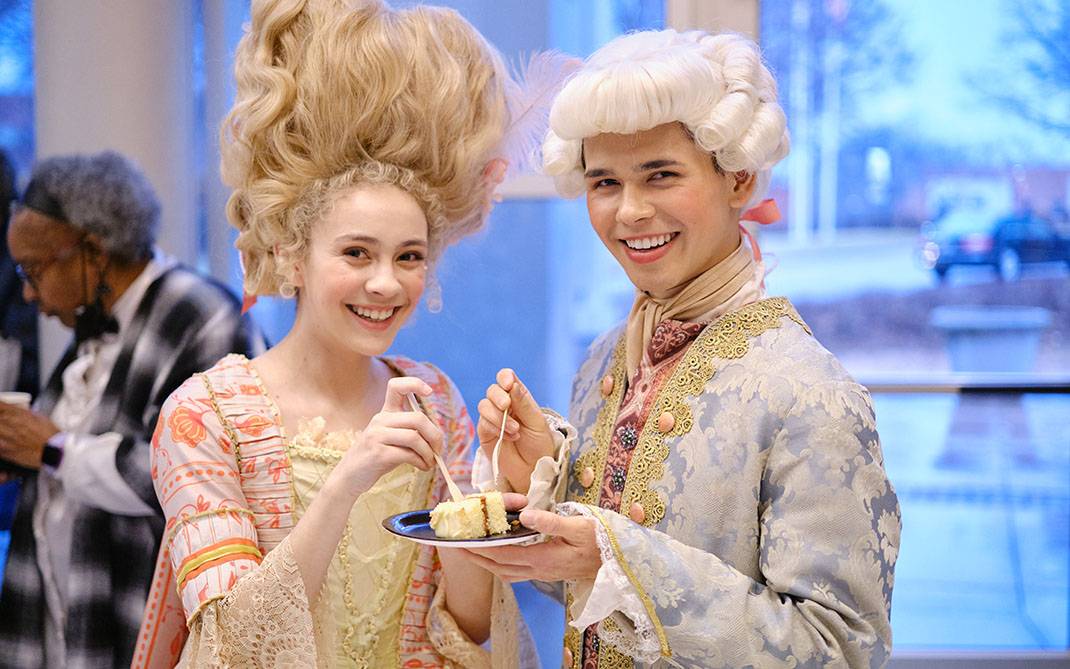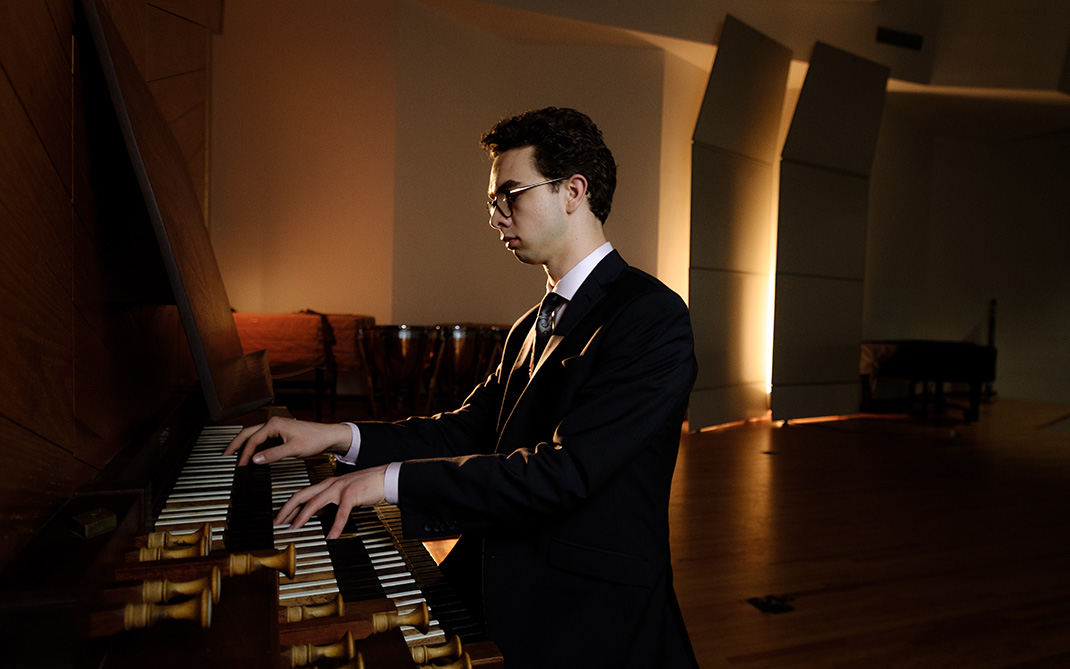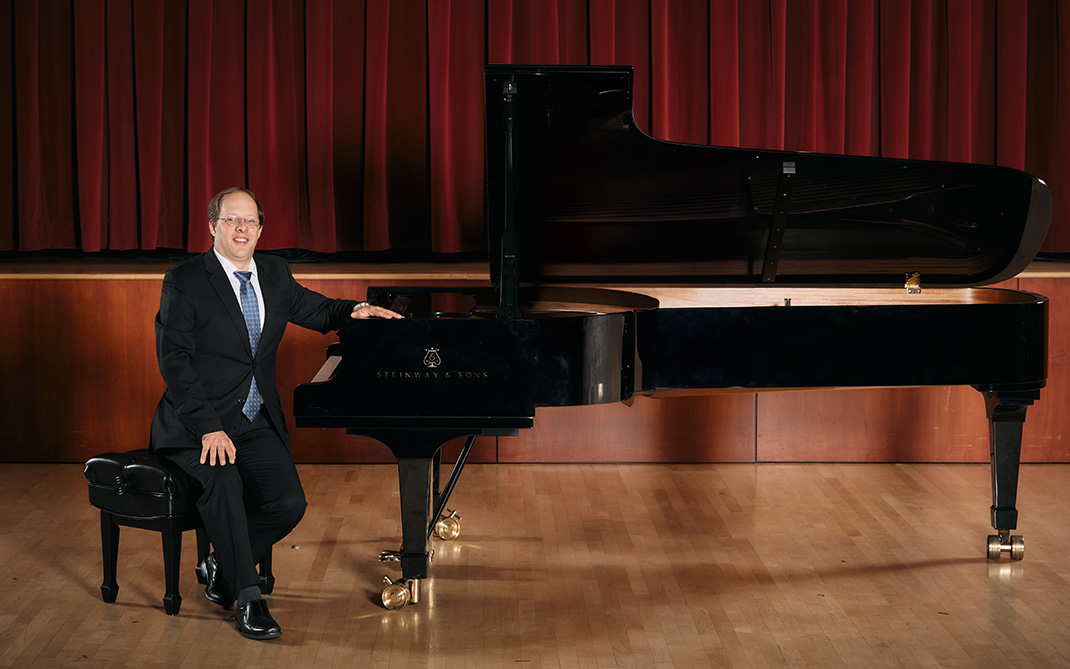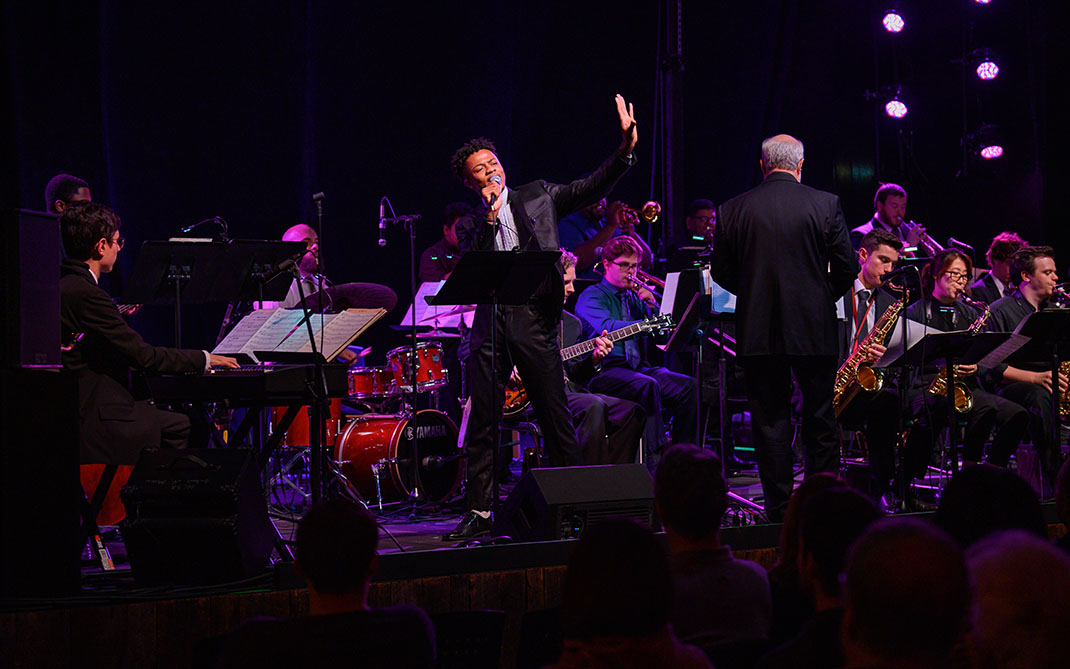John Michael Schert becomes a Visiting Artist and Social Entrepreneur in Chicago
Even in a tailored suit and loafers, John Michael Schert (HS ’00) can pull off a mean arabesque. Fourteen years into a whirlwind career as a professional ballet dancer, executive director and co-founder of an award-winning contemporary dance company, Schert finds himself on an entirely new stage — the first-ever Visiting Artist and Social Entrepreneur at the lauded University of Chicago Booth School of Business.
A business school might seem like an odd place for a ballet dancer, but Schert brings so much more than the technical expertise he honed as a high-school student at the UNCSA School of Dance. To the packed lecture halls of business and law students attending Schert’s Chicago lectures, he is an ambassador from a foreign land — the mysterious “art world” — with enlightening lessons to share on the intrinsic value of the creative process.
“The best of what we do as artists is our process. We work at the intersection of highly structured form and feeling,” says Schert, who has lectured, consulted and researched at Chicago Booth for the past two years. “We are inventors, creators, and visionaries of what’s possible and what’s not yet come.”
“Innovation” and “disruptive thinking” are hallmarks of 21st-century business strategy, but the type of rigorous creative process required to out-imagine the competition isn’t traditionally taught in business schools. It is, however, the backbone of a professional training in the arts.
The creative process, Schert argues, deserves a place alongside the scientific process, the financial process, or the political process in terms of the critical functions of any organization. And who better to lead those creative teams than artists?
“We as artists are the most creative people on the planet, but we aren’t always consulted when a city government needs to resolve a budget deficit, or a marketing team needs to launch a new product,” says Schert.
Chicago Booth offered Schert the inaugural spot as visiting artist and social entrepreneur because of his impressive and varied credentials that span the realms of artistic expression and nonprofit business management. Schert was hired as a dancer with the esteemed American Ballet Theatre straight out of UNCSA, then left to explore more adventurous forms of movement with the Alonzo King LINES Ballet in San Francisco.
Schert met dancer and choreographer Trey McIntyre — another UNCSA alumnus — in 2003, when McIntyre was already considered one of the most original voices in contemporary dance. Together they co-founded Trey McIntyre Project, a wildly successful touring dance company that, in 2008, deliberately chose to put down roots far from New York or California — in the cultural “frontier town” of Boise, Idaho.
“It wasn’t seen as a fantastic idea in the dance world,” laughs Schert, who not only danced with Trey McIntyre Project, but served as the company’s executive director, “We wanted to be more than a financially successful dance company. Trey and I wanted to make an impact, to change the way art influences community. Boise provided a perfect testing ground for our ideas. It’s an unbelievable community that’s still nascent and open to new possibilities.”
With no formal training in business, Schert had to learn all of his organizational leadership, marketing, management and fundraising skills on the job as he juggled multiple responsibilities for the non-profit dance company. For his efforts, Schert was given the 2011 “Young Leader of the Year Award” by Boise Young Professionals and named one of “40 Accomplished Under 40” by the Idaho Business Review.
An important lesson Schert learned in Boise was to “name it and claim it” — to identify the unique services that artists offer and to assign them a real economic value. For example, dancers with Trey McIntyre Project were named artists-in-residence at St. Luke’s Health System in Boise, where performers went bedside to bedside to make art come alive for patients. And they were paid for their work.
“A lot of artists give away their process or else they’re very greedy about it, hiding it like the wizard behind the curtain,” says Schert. “We need to show what this creative process really is. What we do is so important, but if you don’t articulate very clearly what it is you’re doing, you don’t get to claim it or monetize it.”
At Chicago Booth, Schert is doing just that — actively articulating and defining the creative process as it pertains to running a thriving organization. Schert recognizes that most artists don’t understand academia or the business world, and that he’s in a unique and unexpected position as an arts ambassador.
“I’m not an academic. I didn’t go to college or graduate school,” Schert says. “My medium is not writing, but lives in the intelligence of my body — embodied cognition. At Booth, I give public speaking events, conduct research into the creative process, and have spirited debates with academics and practitioners. I try to spend as much time as possible with disparate people and disparate perspectives, interacting and listening. The creative process always starts with listening.”
That’s something Schert learned at UNCSA under the close mentorship of legendary ballet instructor Duncan Noble, who passed away in 2002.
“Duncan taught me how to be a partner, not only in dance, but also in life,” says Schert. “A lot of that was listening and being very available. He taught me how to practice ‘epistemic humility’ — a cognitive choice to be humble — which is a key component of making wise choices. He taught these principles through class and exercises, then re-enforced them outside of the classroom as well.”
Schert has signed on for at least another year at Chicago Booth as he continues to develop prototypes and working methods for applying the creative process across organizations of all kinds. He looks back on his time at UNCSA as critical to the development of his creative work ethic.
“The rigor of UNCSA brings the best of you to the fore,” says Schert of the professional arts education he received. “You have to dig in and apply yourself, but that personal rigor will serve you your entire life in ways that you can’t possibly imagine.
Just ask the ballet dancer in the business suit.
